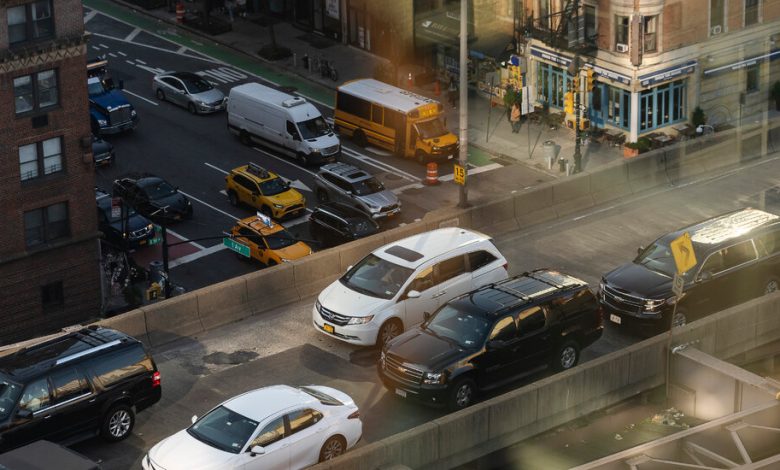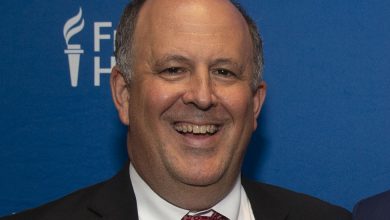The Rise in U.S. Traffic Deaths

For most of the automobile’s first century of existence, it became safer.
In the 1920s, the death toll from vehicle crashes was so high that gruesome photos of accidents were a staple of newspaper coverage. By 2010 — thanks to better design of roads and vehicles, the addition of seatbelts and greater awareness of drunken driving, among other things — the death rate from crashes had fallen almost 90 percent from its 1920s level.
But the progress ended about a decade ago, or at least it did in the United States. Even as vehicle deaths have continued falling in most counties, they have risen in this country.
Here’s a stark way of thinking about the problem: If the U.S. had made as much progress reducing vehicle crashes as other high-income countries had over the past two decades, about 25,000 fewer Americans would die every year.
My colleagues Emily Badger, Ben Blatt and Josh Katz have published a story this morning that tries to solve one part of the mystery of this country’s outlier status. Emily, Ben and Josh focus on a specific part of the problem: Pedestrian deaths have surged at night.
The smartphone
Many of the potential explanations for the trend don’t seem to fit. Cars in this country are large, but they have become only slightly larger since the early 2000s. Drunken driving has not become more common, and roads have not become more dangerous.
But there has been one major change in driver behavior: the use of smartphones.
“Smartphones have become ubiquitous with remarkable speed, overlapping closely with the timeline of rising pedestrian deaths,” Emily, Ben and Josh write. “Apple’s iPhone was introduced in 2007. Within a few years, one-third of American adults said they owned a smartphone.”
Smartphones have also become ubiquitous in other countries, of course. But American drivers seem to be addicted to their phones in ways that drivers elsewhere are not. Surveys suggest Americans spend more time on their phones while driving than people do in other countries. In part, this phenomenon may reflect this country’s culture, which emphasizes professional success and immediate gratification.
It also partly reflects vehicle technology. Nearly all cars in the U.S. are automatic transmission, freeing drivers’ hands (or so they may think) to use phones. In Europe, almost 75 percent of cars still have gears that a driver must change manually.
“The adoption of smartphones for the past 15 years — where we are today, being addicted on social media and other apps — absolutely contributes to the increase in fatalities on our roads,” Matt Fiorentino, a vice president at Cambridge Mobile Telematics, which tracks dangerous driving for carmakers, insurers and regulators, told Emily.
Pot and sidewalks, too
Smartphones aren’t the only likely cause of the trend, Emily, Ben and Josh write. The spread of legal marijuana may also play a role, as may the rise in opioid addiction. In one recent federal study, half of the drivers involved in serious accidents tested positive for at least one active drug.
The continued growth of the population in the Sun Belt, where roads often lack sidewalks, crosswalks and bike lanes, may also be a factor, as may the recent increase in homelessness. People living on the streets are especially vulnerable to being hit by a car.
Some of these problems are difficult to solve. For others, however, there are promising solutions that state and local governments have simply chosen not to try. Building safe sidewalks, as Europe has done, is relatively cheap. Using traffic cameras to identify drivers who are texting — and imposing significant fines on them — would not be difficult, either.
Instead, the U.S. has chosen to accept a vehicle death rate that is almost three times higher than that of Canada, Australia or France, more than four times higher than that of Germany or Japan and more than five times higher than that of Scandinavia, Switzerland or Britain.
Among the recent victims of America’s uniquely high vehicle-death toll: A woman died after being hit by a vehicle while crossing a street in east Las Vegas on Friday and then being hit by a second car while she was on the ground. A person in Redmond, Wash., died on Wednesday night after being struck by a driver in a gray Nissan Pathfinder who then fled the scene. Another pedestrian died in a hit-and-run accident in Colorado Springs on Friday.
And on Thursday night, mourners gathered at a ShopRite parking lot in Stamford, Conn., to remember Marie Jean-Charles, a 74-year-old cashier who had worked at the supermarket for 25 years. She was killed by a speeding driver while she was crossing the street to go to work.
For more: The Times story is full of charts that show how dangerous nighttime has become for pedestrians.
THE LATEST NEWS
Israel-Hamas War
-
Israel said it had taken control of the area around the former Hamas headquarters in Gaza City and that its forces were fighting in three areas where the group still had strongholds.
-
Thousands of Palestinians are seeking refuge each day in Rafah, near Gaza’s southern border, raising fears of a mass displacement into Egypt, U.N. officials said.
-
“If we don’t go back there, there’ll be no state”: The Oct. 7 attacks devastated Kibbutz Kfar Aza. Some displaced residents see rebuilding it as a barometer for Israel’s future.
-
More than 500 Harvard faculty members signed a petition backing the university’s president, who faces mounting pressure to resign over her answers on antisemitism at a congressional hearing.
-
The question of whether anti-Zionism is antisemitic has created division among Democrats, on college campuses and among Jews.
Politics
-
Donald Trump decided not to return to the witness stand as scheduled in his civil fraud trial today.
-
The Biden administration chose the military contractor BAE Systems to get the first grant under its program to encourage computer chip manufacturing in the U.S.
-
Border officials in Arizona closed a crossing to legal arrivals to focus on unlawful ones, threatening disaster for businesses that depended on its traffic.
-
Volodymyr Zelensky will visit Washington tomorrow to lobby for billions of dollars for Ukraine’s war effort.
International
-
The winner of this year’s Nobel Peace Prize, the human-rights activist Narges Mohammadi, is serving a long prison sentence in Iran. Her 17-year-old twins accepted the award in Oslo on her behalf.
-
Saudi Arabia is trying to block a global deal to phase out fossil fuels at the United Nations climate summit, negotiators said.
-
The anticorruption campaigner who won Guatemala’s presidential election faces a barrage of legal attacks aimed at keeping him from taking office in the next few weeks.
Tech
-
Elon Musk has allowed the conspiracy theorist Alex Jones back onto X, five years after he was banned from the platform.
-
Scammers are using QR codes to direct people to websites that can harvest their data, the F.T.C. has warned.
-
A year ago, Sam Bankman-Fried and Changpeng Zhao ran the largest crypto companies. With both facing prison time, entrepreneurs and regulators are jostling to control the industry’s next chapter.
Other Big Stories
-
Residents in Tennessee are reckoning with the damage caused by severe storms and tornadoes that killed at least six people.
-
Big retailers are finding new ways to test higher prices.
-
Scientists are investigating whether the psychological collapse of a man who shot 18 people to death in Maine was linked to brain damage from his time in the Army.
-
The U.S. has built very few huge clean energy projects, partly because officials and energy developers misjudged how difficult it would be.
Opinions
Universities must accept that the best answer to bad speech is better speech, not censorship, David French writes.
Distrust of China as a state is causing anti-Chinese sentiment in the U.S. It’s not the first time, Mae Ngai writes.
Gail Collins and Bret Stephens discuss university presidents and Hunter Biden.
MORNING READS
“Coroner to the stars”: The L.A. County medical examiner’s office investigates sudden celebrity deaths. In a region still defined by Hollywood culture, it is often in the spotlight.
Television history: Norman Lear, through shows like “Good Times” and “The Jeffersons,” reshaped how America saw Black families.
Climate quiz: As the U.N. climate summit comes to a close, test your knowledge.
Metropolitan Diary: Finding a cure for loneliness.
Modern Love: Before moving in with your partner, ask these financial questions.
Lives Lived: Dr. Gao Yaojie defied government pressure in exposing an AIDS epidemic that devastated rural China through reckless blood collection. She died at 95.
SPORTS
Sunday Night Football: The Cowboys outlasted the Eagles, 33-13, in a matchup of two of the N.F.C.’s top teams.
Around the N.F.L.: The Ravens beat the Rams in overtime to take the lead in the race for the A.F.C.’s top playoff spot. And the Chiefs lost to the Bills after a jaw-dropping potential game-winner was called back because of a flag (watch the play). See more takeaways here.
W.N.B.A.: The Indiana Fever scored the top pick in next year’s draft, putting them first in line to get the Iowa star Caitlin Clark.
M.L.B.: Shohei Ohtani’s $700 million contract with the L.A. Dodgers is evidence that Japanese players are among the best in an increasingly international game, Ken Belson writes.
ARTS AND IDEAS
Right back where they started from: When “The O.C.,” with its mixture of glossy nighttime soap and quirky teen comedy, first aired on Fox in the summer of 2003, it was a sensation among younger viewers — and made tabloid phenomena of its stars like Mischa Barton. But while the first season burned bright, the show fizzled out with a shortened fourth season.
“The O.C.” lived on through the admiration of new generation, and for its 20th anniversary, its creators joined the Rolling Stone TV critic Alan Sepinwall to collaborate on an oral history.
More on culture
-
“The Boy and the Heron” is number one at the North American box office, a first for the 82-year-old Japanese animator Hayao Miyazaki, The Washington Post reports.
THE MORNING RECOMMENDS …
Try this viral chicken dish, our most popular recipe of this year.
Listen to Times critics discuss the albums that defined 2023.
Choose a meaningful gift for a child.
Buy a hair dryer that’s a longtime Wirecutter top pick.
Take our news quiz.
GAMES
Here is today’s Spelling Bee. Yesterday’s pangram was halcyon.
And here are today’s Mini Crossword, Wordle, Sudoku and Connections.
Thanks for spending part of your morning with The Times. See you tomorrow. — David
. Reach our team at [email protected].



